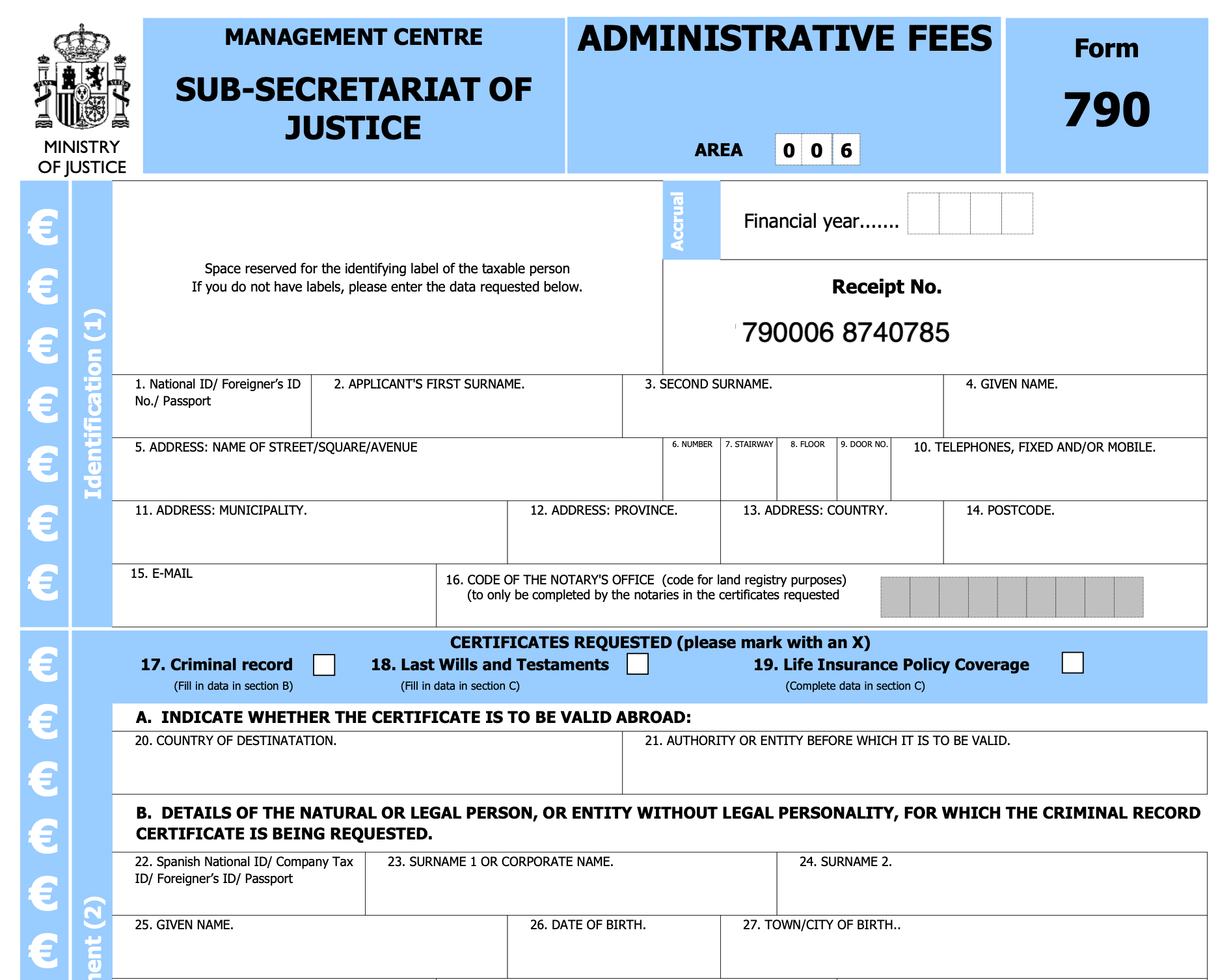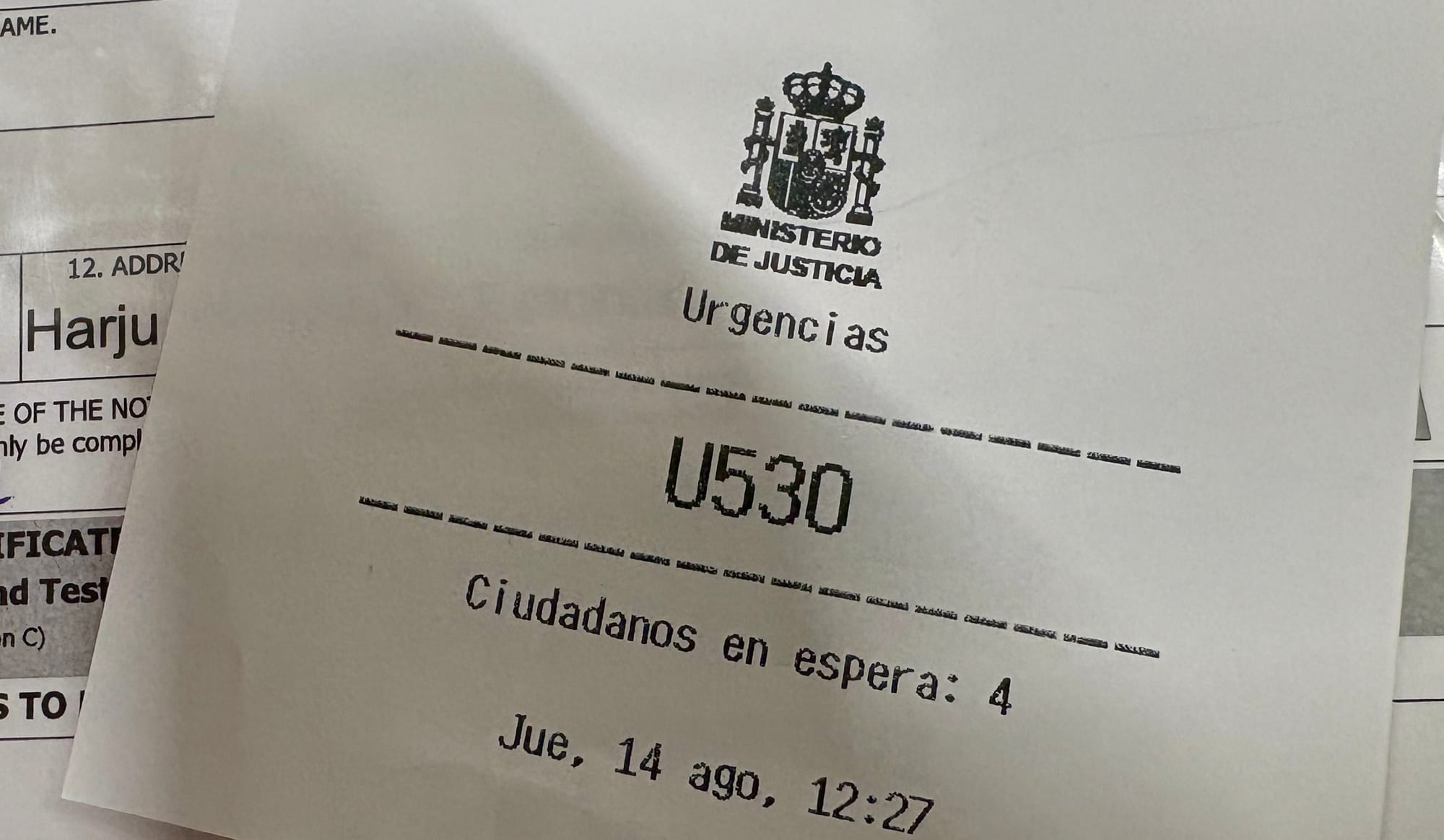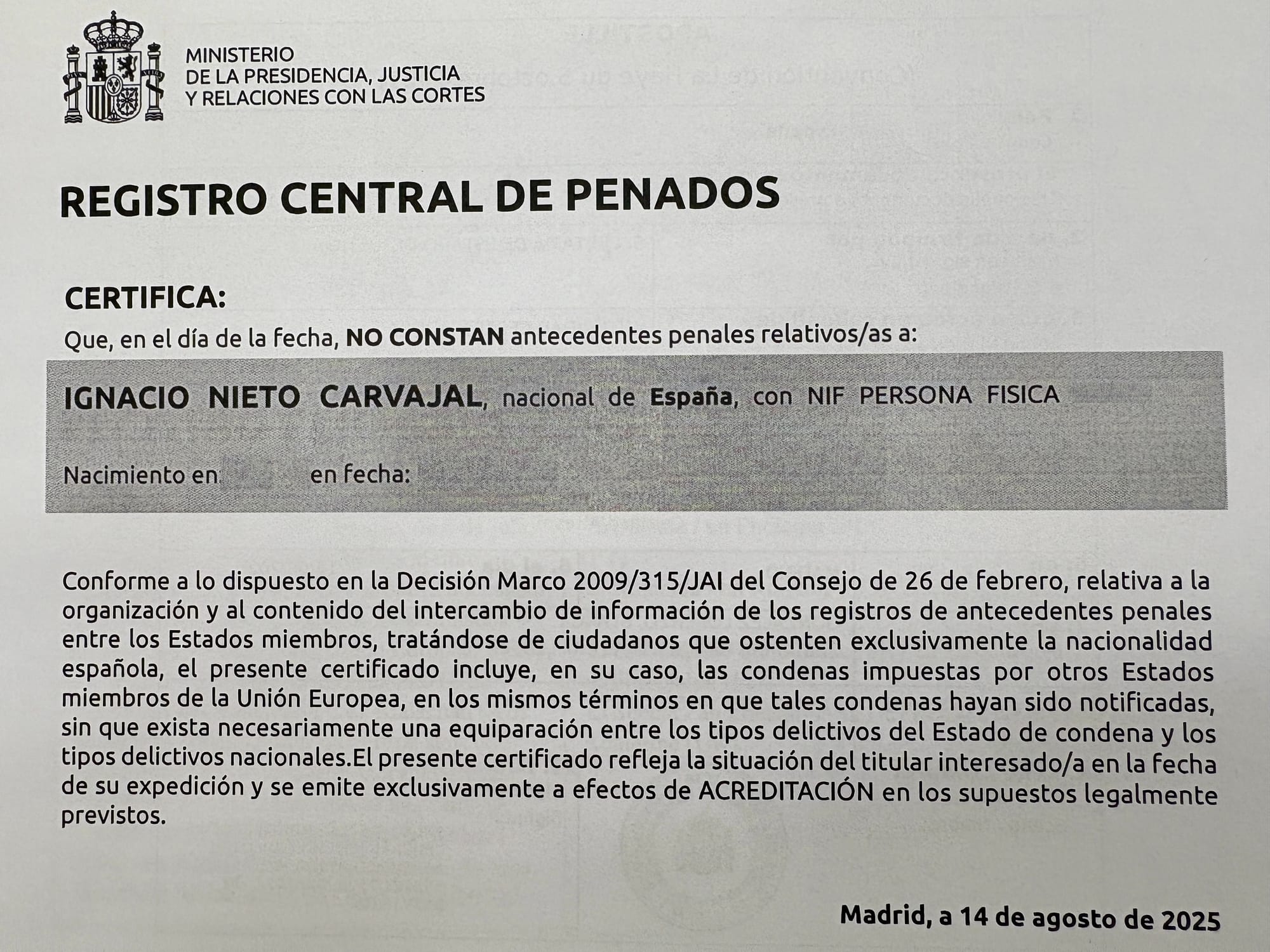The Embarrassing Ordeal of Getting a Criminal Record in Spain
Need your Spanish criminal record? Good luck. Broken links, ancient forms, no online access unless you bank in Spain… Meanwhile in Estonia, it takes 2 clicks. Welcome to 2025, Spanish administration edition.

Note: Three years ago, my co-founder Miguel went through the exact same ordeal trying to get his criminal record in Spain. I wrote about it back then, incredulous that something so simple —a five-minute online process in Estonia— could turn into a €200, two-day nightmare here. You can read that story here.
You’d think I’d learned my lesson. But here I am, three years later, needing my own certificate for the international expansion of Companio. I knew what was coming. I braced myself. Maybe, just maybe, the system had improved. Spoiler alert: it hasn’t.
But wait... A Criminal Records certificate? That should be easy, right? In a normal country, maybe. In Spain, it’s an Olympic-level bureaucratic decathlon.
First Plot Twist: You Can’t Sit With Us (Unless You Bank Spanish)
Spain technically lets you get your criminal record online. That is, if you have a bank account in one of a very select list of “trusted financial institutions” that the government seems to have hand-picked from the 2003 Yellow Pages.
So… no Spanish bank account? No criminal record for you. Apparently, nobody in the Ministry of Justice ever imagined that expats, digital nomads, Spaniards banking with foreign fintechs, or literal Spaniards living abroad might ever need to get this done without a Santander account.
Luckily, I was in Madrid at the time. So I decided to take advantage of this extremely rare alignment of bureaucratic planets and do it the old-school way: physically, in person. How quaint.
Day 1: Chaos at the Ministry of Justice and Form 790 (aka Time Travel to 1998)
I show up at the Ministry of Justice office on Calle Bolsa 8, Madrid. It’s Wednesday the 13th (how poetic). I arrive at 12:30 PM—apparently too close to lunchtime (14:00-15:00) to expect anyone to be working.
There’s no reception, just a couple of security guards who silently judge you unless you have an appointment. The catch? You need to get an appointment online before entering. There’s a QR code stuck on a wall for that. Very 2025.
So I scan the code, and I’m immediately served a delicious buffet of broken links, unusable forms, and JavaScript errors. The link to the list of compatible banks? 404. The “Schedule appointment” button? Doesn’t work. I try Chrome. I try Brave. I try Firefox. Nothing. Welcome to Spanish eGovernment: proudly designed to repel citizens.
So I wait. The line keeps growing. Nobody seems to be able to get through. I help a few confused people—one foreigner who doesn’t speak Spanish and can’t use the machines that will give you an access ticket if you already have an appointment (which, of course, are only in Spanish), and a sweet old lady who’s even more lost than I am.
Finally, a clearly exhausted public servant appears and saves the day. She somehow unlocks a secret screen on my phone (which I couldn’t reach with 20+ years of coding experience) and helps me book an appointment. Victory! Or so I think.
On my way back, I fill out the appointment request form. The system, naturally, demands a Spanish phone number. Because of course, everyone in Spain—digital nomads included—must have a Spanish mobile, right? Thankfully, I borrow my father’s.

Enter: Form 790 — The Bureaucratic Crypt
Now, here comes the real treat: Form 790. This is the payment form you must bring to the bank—yes, a real physical bank—to pay your €3.86 fee.
I open the form. It’s like a relic from a forgotten century. Fields are limited to a certain number of characters (including email addresses—so modern, right?), and you must manually input all kinds of details: ID, name, birth city, parents’ names… I’m surprised it didn’t ask for my blood type and favorite color.
I manage to fill it out using my shortest email address (note to myself: get a new email address that doesn’t include my full name), and get ready for Phase 2 of the quest:
Level 2: Print, Pay, Pray
Here’s what comes next in my epic journey to prove I’m not a criminal:
- Find a printing shop that still exists in 2025
- Print the ancient Form 790
- Walk into a traditional Spanish bank and beg them to accept my €3.86 in cash
- Bring the paid & stamped (yes, stamped) form back to the Ministry of Justice
- Hope they’ll issue the certificate in English, with an apostille
- Cross my fingers for a digital version so I can send it to my Irish lawyer
All of this, mind you, for a document that should take 30 seconds and a click in any civilized country (like Estonia). But who needs efficiency when you can relive the glory of analog systems and Kafkaesque bureaucracy?
Day 2: Bureaucracy, Banks, and Begging for €3.86
After surviving the first day of Spanish bureaucratic madness, I approached the second day with military precision. My appointment was at 12:40, but I gave myself a solid three-hour buffer. I had a mission. I was determined. What could possibly go wrong?
Step 1: The Hunt for €3.86 (in Cash, of Course)
Since I don’t have a Spanish bank account (and apparently live in sin because of it), I needed to pay the fee in cash. I had a 10 leva bill from Bulgaria (close to 5€), so I first hit a currency exchange shop to avoid going to an ATM and carrying a lot of cash later.
Exchanging 10 leva to euros felt absurd already, but I hadn’t even started.
Step 2: Printing the Form 790… in Triplicate
Then I found a print shop to get three copies of the sacred form 790. Why three? Because apparently, trees are an infinite resource. One copy for me, one for the bank, one for the ministry. It’s bureaucracy’s version of the Holy Trinity.
Step 3: Bank Roulette — Third Time’s the Charm
Armed with coins and forms, I hit my first bank: Santander.
“No account? No payment,” said the clerk.
I tried explaining, begging, using logic. No dice.
Second bank: BBVA.
Same story, this time without even pretending to be polite.
Desperate, I turned to strategy. Third bank: CaixaBank.
I lied.
I told the clerk I was “in the process of opening a mortgage with them.” Paperwork still pending, of course, but luckily, I had cash. The trick worked. I paid my €3.86 and got the holy stamp from the bank. Victory. My hands were literally shaking when I walked out.
The Appointment That Almost Wasn’t
At 12:15, I arrived at the Ministry of Justice. I went to the self-service machine to print my appointment ticket. I entered my reservation code and… Error: ticket already printed.
Excuse me?
Tried again in another machine. Same thing.
For a moment, I considered standing up and shouting:
“OK, who here printed my ticket using my personal data?!”
But I restrained myself and joined the queue. Again.
After 20 minutes, the front-desk clerk took pity on me and issued an “Urgent” ticket —U530. I could tell she was overwhelmed, the only staffer facing a growing crowd of irritated citizens. I honestly felt sorry for her. She was doing her best in a system not designed for efficiency —but to frustrate people into giving up.

The Waiting Room and the Final Battle
The waiting room screen said “Citizens waiting: 4”, but there were clearly 30+. Maybe the rest of us were just ghosts in the system.
After 40 long minutes, I was finally called in. I handed over the documents, praying silently that I hadn’t missed a stamp, signature, or box. And… miraculously, everything went through.
Well, almost.
Of course, they couldn’t give me the document in English. I mean, why would they? Even though the certificate is generated from a template, even though a dropdown for language would be trivial to implement —nah. Spain doesn’t believe in dropdowns.
But still, I got it. After two full days, three visits to banks, three versions of the form, a made-up mortgage story, and €3.86 in coins, I had my criminal record certificate in hand.

The Best Part? The Gender-Inclusive Criminal Records
You think we’re done? Oh no.
While reviewing the document, I found this gem–that didn't exist in a previous criminal record I got years ago:
“No constan antecedentes penales relativos/as a”
It’s hard to translate this absurdity, but it’s basically saying:
“There are no criminal records related (masculine)/related (feminine) to…”
Here’s the thing: “criminal records” is a masculine noun in Spanish. You don’t need to add a feminine variation. And I’ve yet to meet a female or non-binary criminal record that felt discriminated against 😅. But hey, someone —somewhere— had time to "fix" that line.
Just not the payment system, the online form, or the foreign-language version.
Conclusion: Two Days, €3.86, One Broken System
Let’s sum it up:
- Time spent: 2 full days
- Forms printed: 3 (I actually printed 6 cause I was so scared of making a mistake and not having a backup)
- Banks visited: 3
- Lies told: 1
- Money paid: €3.86
- Online convenience: 0
In Estonia, this would’ve taken 5 minutes online and cost nothing. That’s the reality of digital governance done right. Meanwhile, in Spain, we’re stuck in a Kafkaesque nightmare made of printers, appointment codes, and stamp-hunting adventures.
I couldn’t end this story without mentioning the one person who truly didn’t deserve any of this: the overwhelmed clerk at the information desk of the Ministry of Justice. She was doing her best under impossible circumstances, navigating broken systems, angry citizens, and an avalanche of paperwork with no help in sight. I genuinely felt sorry for her. The problem is not the people —it’s the system. A system so inefficient, so outdated, so irrational, that it feels almost purposely designed to frustrate citizens, waste their time, and make every simple procedure a bureaucratic obstacle course.
We deserve better.

Comments ()